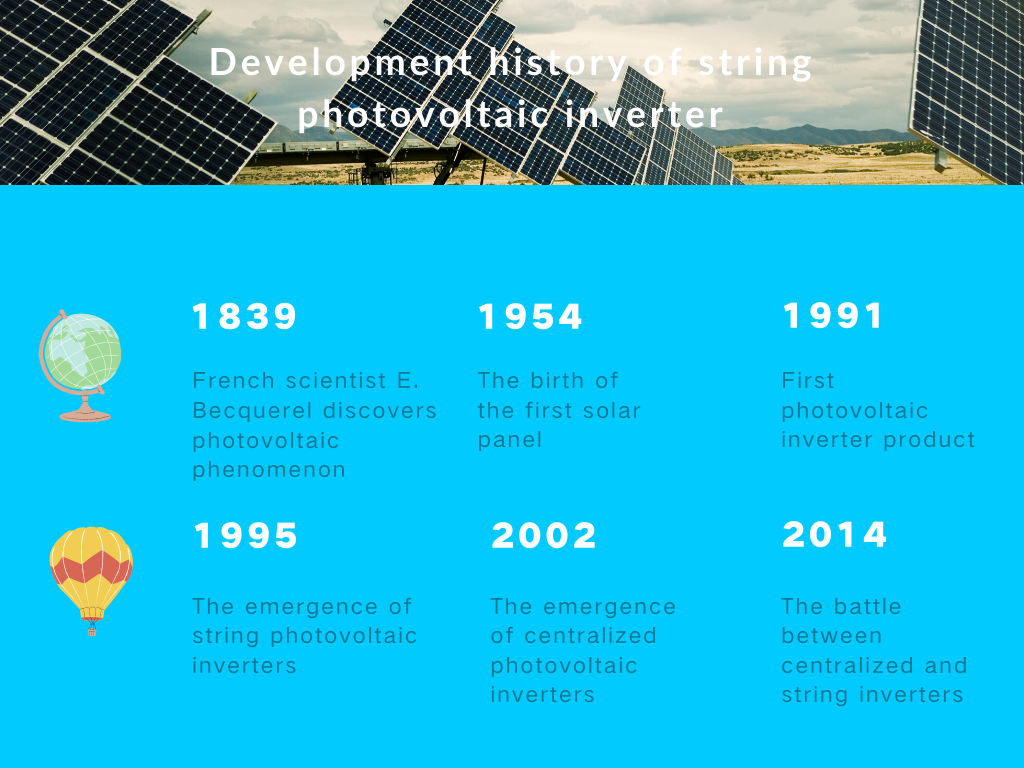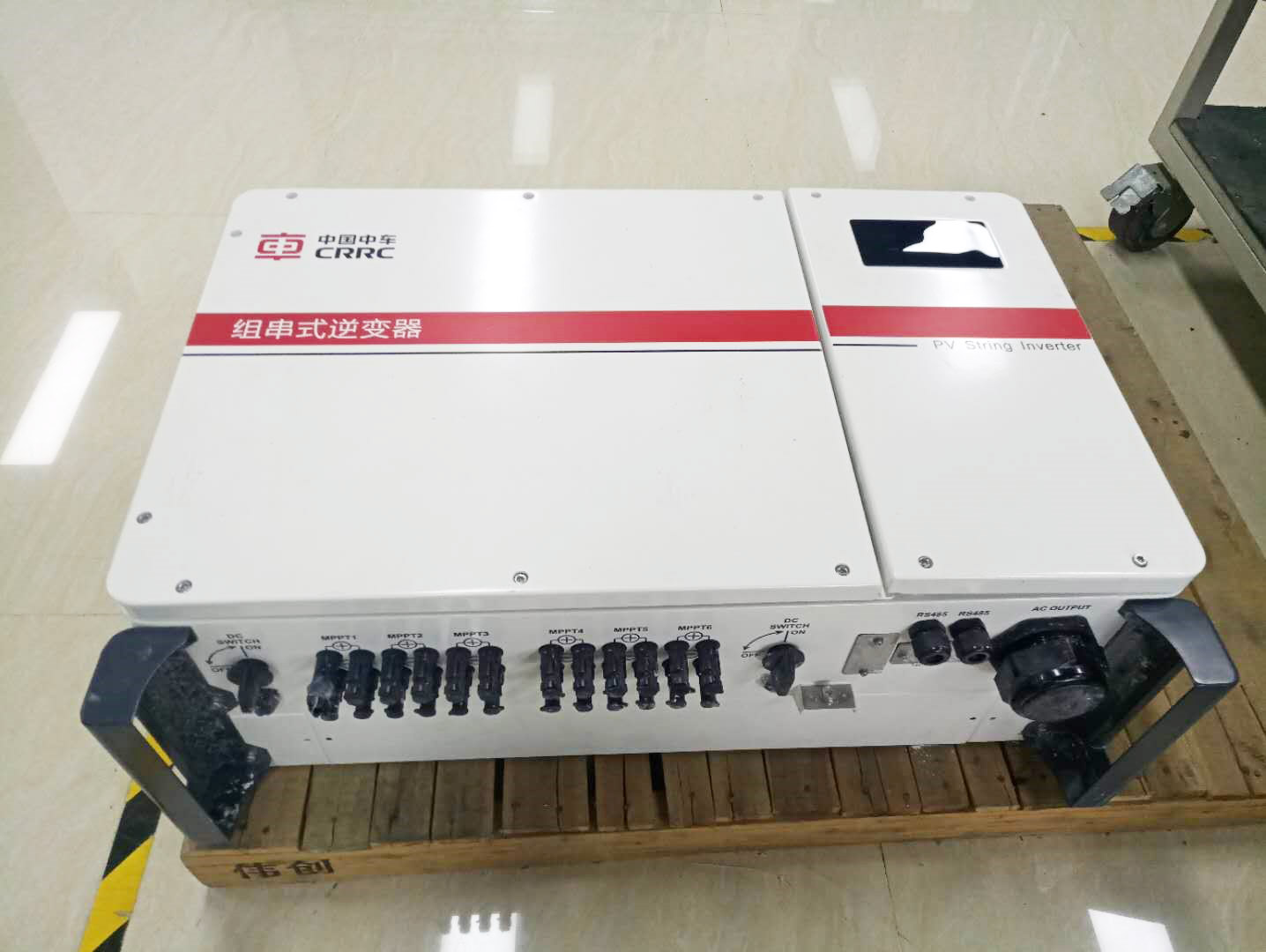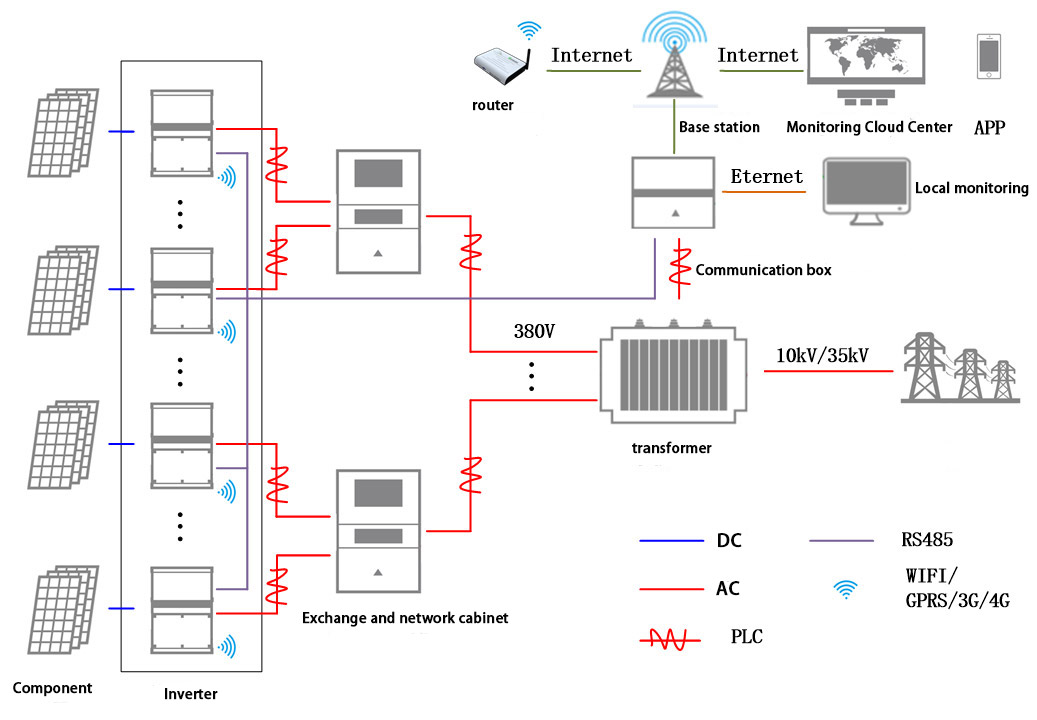Introduction Of String Photovoltaic Inverter
Overview of string photovoltaic inverters
Photovoltaic inverters are an indispensable part of photovoltaic power generation, and their main function is to convert the DC generated by photovoltaic modules into AC.
Development history of string photovoltaic inverter

Development history of string photovoltaic inverter
At the beginning, the selection and design of inverters for domestic photovoltaic power stations, the inverters are generally selected as large as possible. That is, large-scale ground power stations use centralized 500kW, distributed medium and large-scale power stations use 100-250kW centralized inverters, and string inverters below 100kW.
Brief introduction of string photovoltaic inverter
- High protection level, mostly IP65, can be installed directly outdoors;
- The DC input is a special MC4 waterproof terminal for photovoltaic, which can be directly connected to the battery board without going through the DC combiner box;
- Wide output voltage range, output AC 480V line voltage, can be directly connected to local single-phase or three-phase power grid;
- The number of MPPT channels is usually multiple inputs (our company has 6 MPPT). The MPPT control is finer and can adapt to the requirements of various application scenarios.
Advantages of string-type photovoltaic inverter
1. The string inverter has MPPT at the DC end, and the AC end is connected in parallel to the grid. Its advantage is that it is less affected by module differences between strings and shadow occlusion, which increases the power generation to the greatest extent;
For example: When using a centralized photovoltaic inverter, because the photovoltaic panels are connected in series, the voltage of each string of photovoltaic panels is the same. However, when there are external factors such as shadows that cause certain components of the photovoltaic panel to fail to generate electricity normally, the corresponding areas of other photovoltaic panels cannot continue to work. Therefore, the amount of power generation is reduced, and the predetermined power cannot be achieved.
2. The string inverter MPPT has a wide voltage range, generally 250-800V, and the component configuration is more flexible. In rainy and foggy areas, the generation time is long.
3. The string-type grid-connected inverter is small in size and light in weight, and is very convenient to handle and install. In various applications, it can simplify construction and reduce land occupation, and DC line connection does not require DC combiner boxes and DC power distribution cabinets.
4. The string type photovoltaic inverter has the advantages of low self-power consumption, small failure impact, and convenient replacement and maintenance.
Introduction of our string-type photovoltaic grid-connected inverter

Photovoltaic inverter outline drawing
1. The 6-channel MPPT tracking technology makes use of the maximum conversion efficiency of photovoltaic panels. The static MPPT efficiency is not less than 99.9%, and the dynamic MPPT efficiency is not less than 99%.
2. High conversion efficiency, the maximum efficiency of photovoltaic grid-connected inverters should be no less than 98.8%, and the European weighted efficiency should be no less than 98.4%.
3. Two voltage levels of 400VAC and 500VAC are available, which fully cover distributed rooftop power stations and large ground power stations.
4. 60kW, 70kW, 80kW three power sections are available to meet customers' requirements for power section selection.
5. Harmonic requirements: The photovoltaic grid-connected inverter should not cause excessive distortion of the grid voltage waveform and excessive harmonic voltage and harmonic current injected into the grid during operation to ensure that it does not adversely affect other equipment connected to the grid. When the grid-connected photovoltaic inverter is connected to the power grid, the total harmonic distortion rate of the voltage at the common connection point does not exceed 5%, the odd harmonic voltage content rate does not exceed 4%, and the even harmonic voltage content rate does not exceed 2%. When the photovoltaic grid-connected inverter is operating at the rated power, the total harmonic distortion of the current does not exceed. 3%.

Inverter association diagram
Associated object description
Module: 18 to 22 photovoltaic cell modules are connected in series to the DC input port of the photovoltaic grid-connected inverter. The photovoltaic grid-connected inverter has 12 DC input ports and can be connected to 12 strings of photovoltaic cell modules.
AC grid-connected cabinet: The AC grid-connected cabinet can aggregate the AC output of multiple photovoltaic grid-connected inverters into one channel, and connect it to a transformer or feed a 400V power grid.
Transformer: The transformer converts the low-voltage AC power output from the inverter into medium-high voltage AC power and feeds it into the 10kV / 35kV power grid. The PLC carrier communication receiving device is installed on the low-voltage side of the transformer.
Communication cabinet: The communication cabinet collects inverter data through RS485 or PLC carrier communication and forwards it to the monitoring cloud center or local monitoring.
Router: The inverter is connected to the router via WIFI to realize remote upload of data.
Monitoring cloud center: The monitoring cloud center collects inverter device information and operating data through the Internet, and implements data monitoring, fault diagnosis, and intelligent operation and maintenance of the inverter through a big data analysis system.
Local monitoring: The local monitoring implements real-time monitoring and control of the inverter.
APP: The mobile APP software reads the inverter data from the monitoring cloud center. Remote monitoring of the inverter can be achieved through the mobile APP.
 Global - English
Global - English Spanish - Español
Spanish - Español French - Français
French - Français Russian - Pусский язык
Russian - Pусский язык Chinese - 中文
Chinese - 中文 Korean - 한국어
Korean - 한국어 Vietnamese - Tiếng Việt
Vietnamese - Tiếng Việt